From its status as a “pangolin purgatory” in the previous century, Taiwan has transformed itself into the world’s leading bastion for the scaly anteater, even if risks remain.
Extending in all directions from the 24.5km marker along Kaohsiung’s Provincial Highway No. 28 is a seemingly endless forest of inhospitable thorny bamboo. Matou Mountain (馬頭山) stands nearby, the terrain a stretch of badlands rising to 300m above sea level.
The carpet of decaying leaves is home to colonies of ants and termites, making it the perfect place for pangolins.
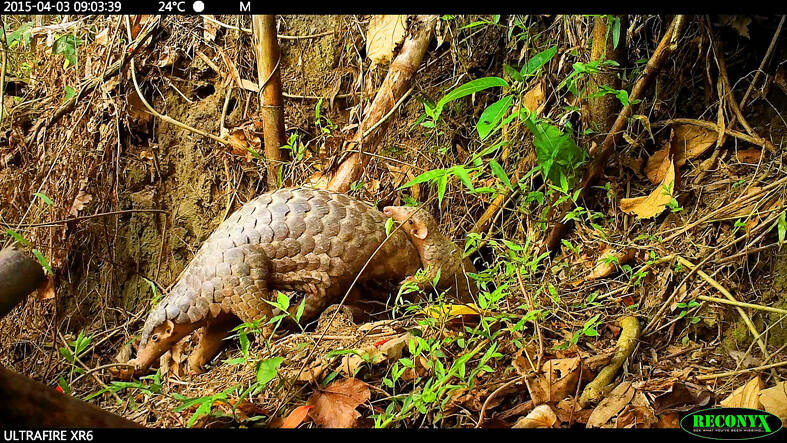
Photo courtesy of Sun Ching-min
“These days pangolins are rare around the world, but Taiwan has about 20,000 by rough estimates,” said “Dr Pangolin” Sun Ching-min (孫敬閔), an assistant professor of wildlife conservation at the National Pingtung University of Science and Technology.
“Especially in Taitung County’s Luanshan (鸞山) area, there are about 12 pangolins every square kilometer, making it potentially the greatest density in the world,” he said.
The figures are only general estimates, as understanding of the habits of reclusive and nocturnal pangolins is limited. To measure their numbers, researchers must count their burrows and see how many are captured on wildlife cameras.
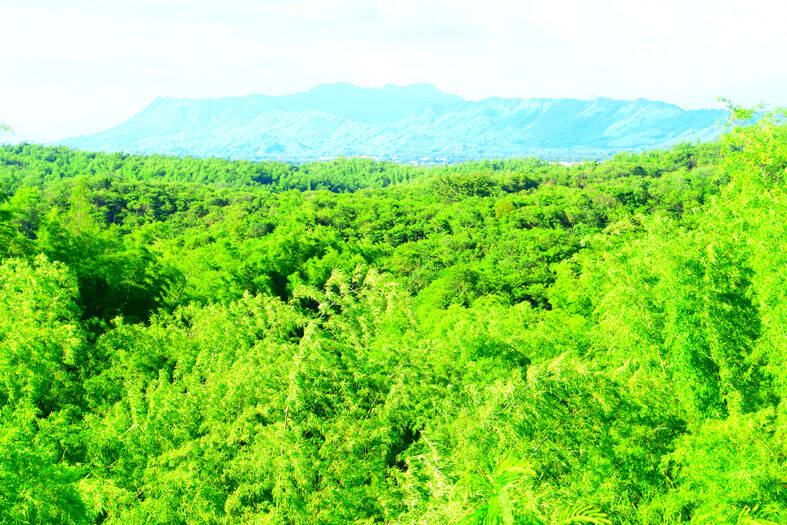
Photo: Su Fu-nan, Taipei Times
In one 100m-radius banana grove on Matou Mountain alone, Sun once found 30 to 40 burrows.
Locals often have run-ins with the scaly mammals, their numbers having now risen to a level “beyond imagining,” Sun said.
Over the past three years, the Matou Mountain Natural Humanism Association has counted 16 pangolin killings by stray dogs, while five were struck by vehicles.
Pangolins are the only known mammals with large keratin scales that cover their skin, which is one reason for their popularity in the illicit wildlife trade.
They are present in the folklore of many cultures and were hunted by the early inhabitants of Taiwan, but it was Japan that developed leatherworking techniques using pangolin scales. In China, their meat is believed to promote blood circulation, while the scales are said to promote lactation in addition to their beauty and durability as a leather.
The 1950s to the 1970s were the peak of pangolin leatherworking in Taiwan, with 5,000 hides exported every month. In the 1980s, stores offering alpine products in Taiwan sold more than 2,000 pangolins per year.
More than a decade of serious hunting decimated the wild pangolin population, and it is still listed as endangered today.
Then, in 1989, Taiwan enacted the Wildlife Conservation Act (野生動物保育法) banning the poaching and sale of endangered species, making the nation one of the world’s few conservation grounds for pangolins.
Through more than three decades of concerted effort by the government, private organizations and individuals, Taiwan is believed to have achieved the highest population density of pangolins in the world.
Since June last year, Sun has been tracking the activity of four pangolins on Matou Mountain to better understand their development, habits and diet.
Pangolins are skilled ant hunters, with tens of thousands of ants and termites found in just one pile of feces, he said.
From his findings, Sun estimates that one pangolin eats 30 million ants in a year, while previous research shows that pangolins in eastern Taiwan eat more than 70 types of ants and four types of termites.
“Although Matou Mountain pangolins do have such a variety of ants to eat, the ones they have are delicious,” Sun said. “The Odontotermes formosanus, which emerges in the south after the plum rains, has a 50 percent fat content that can improve milk nutrition for nursing pangolin mothers.”
Although they have no natural predators in Taiwan, pangolins still face myriad dangers, including vehicles, animal traps and stray dogs, Sun said.
The estimated 160,000 stray dogs roaming the nation’s mountains are known to attack pangolins, especially their tails, which are used by mother pangolins to carry their young, he said.
Without a functioning tail, pangolins are less competitive and have trouble raising their young, perhaps leading to premature death, Sun said.
While conceding that the stray dog issue is hard to solve in the short term, Sun said people can help to reduce their numbers, including by refraining from feeding them.
He said he also supports moving them from sensitive areas such as Matou Mountain to better protect pangolins and other threatened creatures.
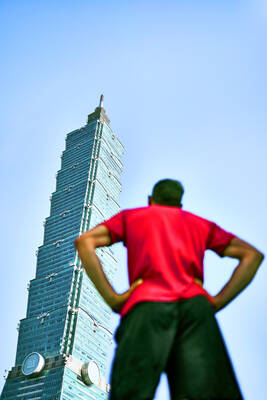
US climber Alex Honnold is to attempt to scale Taipei 101 without a rope and harness in a live Netflix special on Jan. 24, the streaming platform announced on Wednesday. Accounting for the time difference, the two-hour broadcast of Honnold’s climb, called Skyscraper Live, is to air on Jan. 23 in the US, Netflix said in a statement. Honnold, 40, was the first person ever to free solo climb the 900m El Capitan rock formation in Yosemite National Park — a feat that was recorded and later made into the 2018 documentary film Free Solo. Netflix previewed Skyscraper Live in October, after videos

NUMBERS IMBALANCE: More than 4 million Taiwanese have visited China this year, while only about half a million Chinese have visited here Beijing has yet to respond to Taiwan’s requests for negotiation over matters related to the recovery of cross-strait tourism, the Tourism Administration said yesterday. Taiwan’s tourism authority issued the statement after Chinese-language daily the China Times reported yesterday that the government’s policy of banning group tours to China does not stop Taiwanese from visiting the country. As of October, more than 4.2 million had traveled to China this year, exceeding last year. Beijing estimated the number of Taiwanese tourists in China could reach 4.5 million this year. By contrast, only 500,000 Chinese tourists are expected in Taiwan, the report said. The report
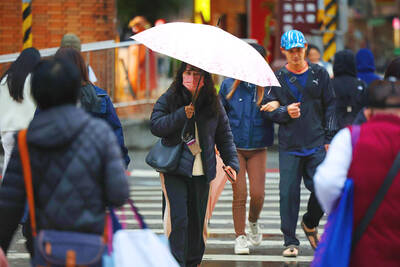
Temperatures are forecast to drop steadily as a continental cold air mass moves across Taiwan, with some areas also likely to see heavy rainfall, the Central Weather Administration (CWA) said. From today through early tomorrow, a cold air mass would keep temperatures low across central and northern Taiwan, and the eastern half of Taiwan proper, with isolated brief showers forecast along Keelung’s north coast, Taipei and New Taipei City’s mountainous areas and eastern Taiwan, it said. Lows of 11°C to 15°C are forecast in central and northern Taiwan, Yilan County, and the outlying Kinmen and Lienchiang (Matsu) counties, and 14°C to 17°C
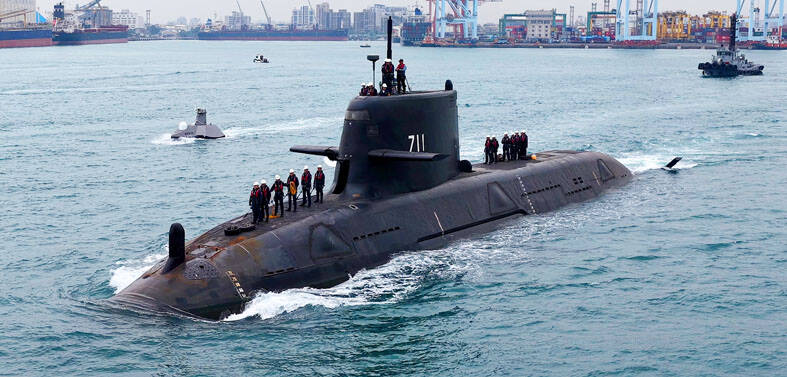
STEERING FAILURE: The first boat of its class is experiencing teething issues as it readies for acceptance by the navy, according to a recent story about rudder failure The Hai Kun (海鯤), the nation’s first locally built submarine, allegedly suffered a total failure of stern hydraulic systems during the second round of sea acceptance trials on June 26, and sailors were forced to manually operate the X-rudder to turn the submarine and return to port, news Web site Mirror Daily reported yesterday. The report said that tugboats following the Hai Kun assisted the submarine in avoiding collisions with other ships due to the X-rudder malfunctioning. At the time of the report, the submarine had completed its trials and was scheduled to begin diving and surfacing tests in shallow areas. The X-rudder,